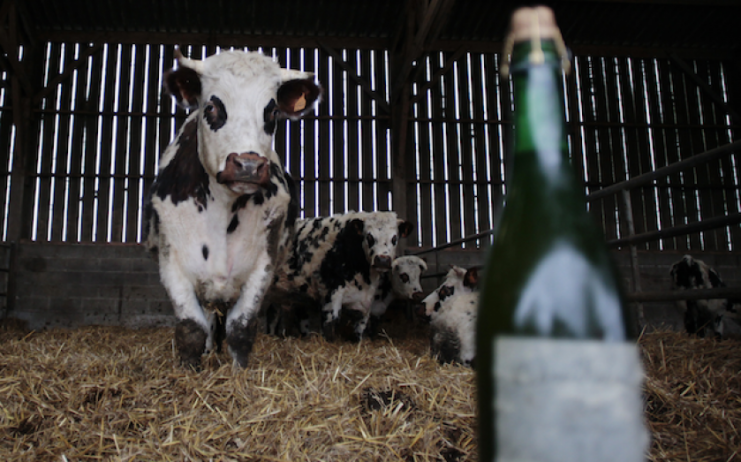Coronavirus: We must future-proof our vital supply chains

UK Government orders for social distancing and the closure of many businesses meant an extra 500 million meals and snacks—30% of all calories—were being eaten in UK homes every week in late March. And yet, according to Nielsen, consumers were adding just a single additional item to their average shopping basket on each trip.
So, why did we witness empty shelves? The fundamental issue is one of logistics. The UK’s food supply chain is finely calibrated so that even additional items per trip—on a nation-wide scale—threw the equilibrium into chaos. The empty shelves were caused by the challenges of replenishing stocks after millions of people suddenly began eating more at home, and a reminder to us all of our reliance on a food supply chain that is not built for unexpected shocks like COVID-19.
Read more: City A.M. speaks to Michael Spencer about the pandemic and the economic recovery
As a nation we rely heavily on food imports to satisfy our food needs and desires—just half of what we consume is produced in the UK. COVID-19 not only threatens production of food we import, but a shortfall of 80,000 seasonal workers in the UK, meaning we could struggle to harvest the food we have grown here, too.
While it is statistically unlikely that we will face another pandemic in the near future, other shocks will come—whether health emergencies, political crises, or perhaps most inevitably, climate volatility.
Just one extreme weather event affecting a major food production area in the UK or globally could topple over our already stretched food production ecosystem. So how can we be better prepared for the cascade risk climate presents?
Recognising the risk cascade climate poses to our supply chains
Climate-induced changes to food production is an increasing problem globally. The UK generally enjoys easy access to an extensive range of food. However, this is built upon an extremely complex, globalised system of production, distribution and retail. In the UK, we import 42% of our vegetables and 89% of our fruit predominately from water stressed countries, for example. Global climate issues, therefore, have a local impact on our food supply.
As COVID-19 has demonstrated, unexpected events can throw this system into uncertainty.
A lack of labour to harvest crops as seasonal workers are unable to travel, and potentially food protectionism with “breadbasket” nations cutting exports, are just two ways the pandemic will likely impact the supply chain. This places it in an even weaker state, diminishing its (already limited) resilience to climate events.
More threatening than both the pandemic or a single climate event is the risk of a climate event cascade, in which catastrophic droughts, floods or fires trigger further volatility across vast stretches of the globe, wreaking havoc on international food production.
One of these cascading events is already taking place. The worst locust crisis in decades is unfolding in east Africa, threatening the food security of 25 million people, and its ability to export to countries like the UK. The locust crisis illustrates both the interconnectedness of our supply chains and the exponential potential of climate cascade events. Meanwhile, the risk is growing—particularly when considering food production needs not only to remain stable but rise by 60% by 2050—due to population rises and increasing global wealth.
But whose responsibility is it to take action? And what actions do we need to take?
Taking responsibility for resilience
In times of crisis individuals will look to governments and businesses for guidance. Together the two wield enormous power to affect rapid change.
When it comes to the risk of climate-based food shortages, however, organisations and governments can’t afford to be reactive. By the time a shortage strikes, it will be too late. Unlike the current pandemic, food shortages caused by climate volatility will be longer term. For example, crop cycles last months or even years, not the days or weeks it takes to restock a supermarket.
The onus then is on preparation. By being proactive and forecasting climate risk, national and international organisations and governments can plan for climate shocks to the supply chain.
Increasing foresight and understanding risk
Advances in technology, greater access to data and scientific models today can yield powerful insights for leaders in business and government to take action and prepare. As the battle against COVID-19 has shown, rapid and decisive national and international action by businesses and governments is not only possible, but transformative.
A vast array of satellites, sensors and scientists worldwide are collecting and interrogating extensive data on the shifting climate. Recent advances in artificial intelligence, data engineering, machine learning and Earth Sciences can now translate this context into usable, accurate insight for businesses and governments to understand risks presented to them.
The UK’s supermarket shelves have been filling up again in recent days; demand and our supply has readjusted. But businesses and governments have to recognise these shocks will come again, and soon.
COVID-19 has weakened food production and supply short-term but climate volatility poses an even greater threat. Learning from the international response to COVID-19, embracing the potential of AI and big data to tackle the largest existential crises we face must become a priority for businesses and governments, now.